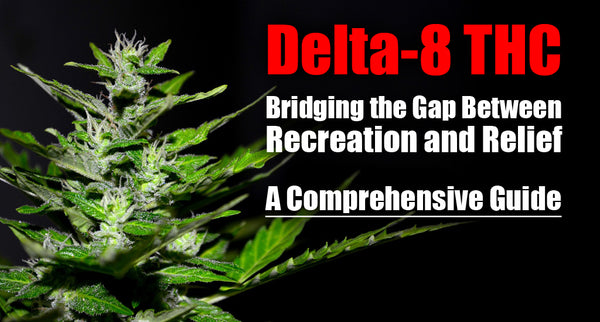
5 Things to Know About Cannabis Vape Cartridges
The introduction of cannabis cartridges has transformed the way patients and adults in recreational states engage with cannabis. Traditional practices of steamy, pungent, and suffocating smoke sessions now pale in comparison to the modern, refined, and enjoyable vaping experience.
Although the popularity and availability of cannabis cartridges have surged across the United States over the past decade, there is still much for consumers to discover and understand about the products they are using.
First: Not All Cannabinoids are the Same
Cannabinoids are a type of compound found in cannabis plants, the National Center for Complementary and Integrative Health explains. These compounds interact with the CB1 and CB2 receptors throughout your endocannabinoid system.
There are about 540 chemical substances in cannabis plants — and there are at least 100 types of cannabinoids that exist besides THC and CBD.
Delta 9 THC is the primary psychoactive compound in cannabis plants and one of the most widely-studied cannabinoids, according to a Surgical Neurology International Journal review. Delta 9 THC activates the CB1 and CB2 receptors.
Activation of the CB1 receptors through Delta 9 THC is associated with a decrease in pain perception. CB2 receptor activation is associated with immune regulation and anti-inflammation.
According to the National Cancer Institute, Delta 8 THC is a psychoactive compound associated with:
- Appetite stimulation
- Decreases in anxiety
- Nausea and vomiting reduction
- Neuroprotection
- Pain relief
There are also many non-psychoactive cannabinoids found in cannabis, which include:
- Cannabidiol (CBD)
- Cannabigerol (CBG)
- Cannabichromene (CBC)
- Cannabidivarin (CBDV)
Second: Vaping Cannabis is Safer Than Traditionally Smoking Flower
When comparing vaping cannabis to traditional smoking methods like joints or bowls, it's important to consider the health implications. According to the American Lung Association, smoking cannabis in traditional forms exposes the lungs to harmful toxins and carcinogens due to combustion. This risk also extends to secondhand smoke from cannabis. These toxins and carcinogens can cause lung irritation and potentially lead to more serious respiratory issues.
In contrast, vaping cannabis oil is perceived as a safer alternative. This method involves heating cannabis to a temperature that turns the active compounds into vapor, without burning the plant material. This process significantly reduces the exposure to the harmful toxins and carcinogens that are released during combustion. Therefore, using a vape cartridge means inhaling fewer harmful substances compared to traditional smoking methods.
However, it's crucial to note that research on the long-term effects of vaping cannabis is still ongoing. While current evidence suggests that vaping may be a safer alternative to smoking, further studies are needed to fully understand its health implications.
Vaping oil is a lot different than vaping dry herb though, check our The Pros and Cons of Vaping vs Smoking Weed here.
Third: Watch Out for Filler Products and Terpene Origin
In the context of cannabis vaping, particularly with regards to the safety of vape cartridge ingredients, it is essential to be aware of the potential risks associated with certain commonly used additives. Two of the most prevalent thinning agents in vape cartridges are polyethylene glycol (PEG) and propylene glycol (PG). These substances are added to cannabis oil to improve its flow in vape pens.
PEG has been criticized for containing ethylene oxide, while PG is used in various industries, including food processing. Although the FDA recognizes PG as generally safe, there are studies suggesting that it can exacerbate asthma and allergies, and both PG and PEG can break down into carcinogens like formaldehyde and acetaldehyde, particularly when vaped at high temperatures. The carcinogenic potential of these byproducts is a significant concern, especially since formaldehyde is recognized as a group 1 carcinogen by the International Agency for Research on Cancer.
Another issue to consider is the source of terpenes used in vape cartridges. Terpenes, which can enhance the flavor profile of cannabis products, are generally considered safe. However, some companies might use low-quality terpene products, which could be harmful. Ideally, cannabis-derived terpenes are preferred due to their contribution to the entourage effect and the general safety profile.
Moreover, there are concerns about the presence of pesticides in some vape cartridges, particularly in regions with less stringent cannabis production regulations. The lack of regulation in certain areas means that consumers and companies might not be fully aware of what's in their products, leading to potential health risks.
Related article: What Are Terpenoids And What Do They Do?
Fourth: Cannabis Vape Oil Comes in Multiple Forms
When you visit a dispensary, you'll likely encounter different types of cannabis vape cartridges, each labeled according to their extraction method. These include CO2, Distillate, and Liquid Live Resin/Live cartridges, each offering unique characteristics:
-
CO2 Cannabis Cartridges: CO2 extraction utilizes carbon dioxide as a solvent under high pressure and low temperature to maintain the purity and integrity of the extracted compounds. This method is known for its safety and environmental friendliness. CO2 extraction is efficient in separating various cannabinoids and terpenes from cannabis, resulting in a clean, high-quality concentrate. The CO2 process can target specific molecules like terpenes, allowing for a solventless extraction that retains the strain's authentic flavor and aroma.
-
Distillate Cannabis Cartridges: Distillates are highly refined cannabis oils containing a high concentration of cannabinoids. The distillation process removes most other compounds, resulting in a potent and pure product. However, due to the thickness of distillate oils, thinning agents are often added for compatibility with vape cartridges. This process may affect the natural profile of the cannabis plant, focusing mainly on the potency rather than the full spectrum of cannabinoids and terpenes.
-
Liquid Live Resin/Live Cannabis Cartridges: Liquid Live Resin cartridges are made using a process similar to CO2 extraction, but the cannabis flower is frozen immediately after harvest, rather than dried and cured. This method preserves more of the plant's natural compounds, including terpenes and cannabinoids, which might otherwise be lost during the drying process. As a result, Live Resin cartridges often offer a more robust and authentic cannabis experience, typically at a higher price point due to the quality and complexity of the extraction process.
Fifth: There Are Many Different Cannabis Cartridges Styles
Cannabis vape cartridges vary in their design, material, and compatibility with different vaping devices. The most prevalent type of cartridge is the 510 thread cartridge, named for its 5mm threads, which are universally compatible with most e-cigarettes and vaporizer pens. This standardization makes it easy for consumers to pair various cartridges with different brands of batteries, adding to the convenience of use.
Materials used in the construction of these cartridges also differ. Common materials include high-quality aluminum, food-grade ceramic, borosilicate glass, and titanium. These components are crucial as they come in direct contact with the user's mouth and airways, making heat-resistance and food-grade quality important for safety.
Cartridges also come in different sizes, typically ranging from 0.5g to 2g, though there are even larger sizes available for more extensive use. This variety caters to different consumption needs and preferences.
When choosing a cannabis cartridge, it's essential to ensure it's compatible with your vaping device. This can usually be determined by the type of thread – 510 being the most common – and can be confirmed with your budtender or the product's description. Also, consider the materials used in the cartridge's construction for safety and quality assurance, as well as the size of the cartridge, depending on your usage requirements.
Conclusion
In conclusion, the evolution of cannabis cartridges has revolutionized the cannabis experience, offering a cleaner, more controlled, and discreet way to consume cannabis compared to traditional smoking methods.
As the landscape of cannabis products expands, consumers are empowered with a plethora of choices, each with unique characteristics and effects. Understanding the diversity of cannabinoids, the health implications of vaping versus smoking, the safety of cartridge ingredients, the extraction methods used in different vape oils, and the design variations of cartridges can enhance the user experience and safety.
It's crucial for consumers to stay informed about the products they use, ensuring compatibility with their devices and being aware of the materials and ingredients involved. This knowledge not only contributes to a more enjoyable cannabis experience but also promotes responsible and safe usage.
Important resources
Here are some reliable resources that provide further information on the topics discussed in the article:
-
National Center for Complementary and Integrative Health (NCCIH) - Cannabis and Cannabinoids: https://www.nccih.nih.gov/health/cannabis-marijuana-and-cannabinoids-what-you-need-to-know
-
American Lung Association - Vaping and Lung Health: https://www.lung.org/quit-smoking/smoking-facts/vaping-and-lung-health
-
National Academy of Sciences - The Health Effects of Cannabis and Cannabinoids: The Current State of Evidence and Recommendations for Research: https://www.ncbi.nlm.nih.gov/books/NBK425762/
-
Leafly - What Are Terpenes and What Do They Do?: https://www.leafly.com/learn/cannabis-terpenes
-
Medical News Today - What Is Delta-8-THC?: https://www.medicalnewstoday.com/articles/delta-8-thc
-
Project CBD - Cannabinoids & Your Health: https://www.projectcbd.org/science/cannabis-pharmacology/cannabinoids-your-health
-
Weedmaps - CO2 Oil Extraction: Your Complete Guide: https://weedmaps.com/learn/cannabis-and-the-body/co2-oil-extraction
-
Leafly - How to Choose the Best THC Vape Cartridge for You: https://www.leafly.com/news/strains-products/how-to-choose-best-thc-vape-cartridge
-
NORML - State Medical Marijuana Laws: https://norml.org/states
These resources provide valuable information on cannabinoids, vaping safety, extraction processes, terpenes, and the legal aspects of cannabis. They can serve as references for readers seeking in-depth knowledge on the subject matter.



